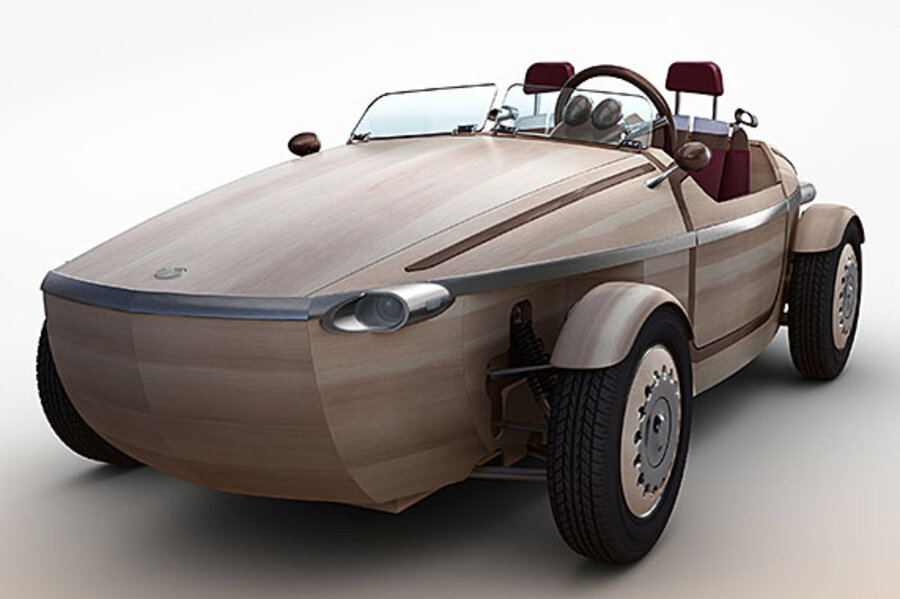Why Toyota made an electric car out of wood
Loading...
Toyota will reveal its newest concept car, a roadster called Setsuna, at the Milan Design Week. This reveal comes with a twist – the electric car is made of wood.
The car’s name, Setsuna, means “moment” in Japanese, and refers to the fleeting relationship between humans and material things, like cars.
Setsuna was designed by Toyota’s chief engineer Kenji Tsuji and a designer, Kota Nezu. The two had previously partnered to create Toyota’s Camatte.
The car’s shape is reminiscent of an Italian speedboat. Its curves and smooth lines are the product of a special Japanese construction technique called “okuriari.” This technique uses no nails or screws to join body pieces, but instead relies on the way the wood is shaped to hold the piece together.
According to Setsuna’s designers, the company chose the wood in the car’s frame with the future in mind. The vehicle’s frame is made from Japanese birch, and its exterior panelling is made from Japanese cedar. The floor is crafted from Japanese zelkova elm, the seats from castor oil tree wood, and the instrument panel from cyprus.
Each of these woods will weather differently, and the car will change color and texture over time as the wood ages and matures.
“We would also like the viewer to imagine how the Setsuna will gradually develop a complex and unique character over the years,” said Tsuji.
“With the Setsuna concept, Toyota is expressing the notion that, as a family accrues time and experiences together with their car,” said Toyota in a statement, “lovingly caring for it and passing it on to the next generation, that car will acquire a new type of value that only the members of that family can appreciate.”
For a car designed to be timeless, the Setsuna includes a surprising feature, a 100-year meter to keep track of time.
The Setsuna’s other instruments are unlikely to have to withstand much pressure. Powered by an electric motor, the car’s maximum speed is 28 miles per hour.
Don’t plan to go too far, either. Powered by six lead acid batteries, the Setsuna has a range of just under 16 miles. Although the car is drivable, Toyota has not made it street legal.
While not for sale, Toyota hopes to learn from this design, “to collect feedback from a wide range of people – including experts such as cutting-edge designers and creators,” according to Toyota spokeswoman Leela McMullen, “as well as the general public – and maybe even use the results in developing future vehicles.”
There have been other wooden cars in history. Many were built by woodworkers or hobbyists who modified designs and existing car bodies, but some have been quite famous.
The 1939 Lagonda Rapide Tulipwood Tourer, for example, had a 225-horsepower engine and sold for $450,000 in 2007. On the other hand, early models of the German Fuldamobil had a wooden body and the car had one of the longest production records (1950-69) in microcar history.
Perhaps Toyota’s Setsuna will inspire a new wooden car revolution.








